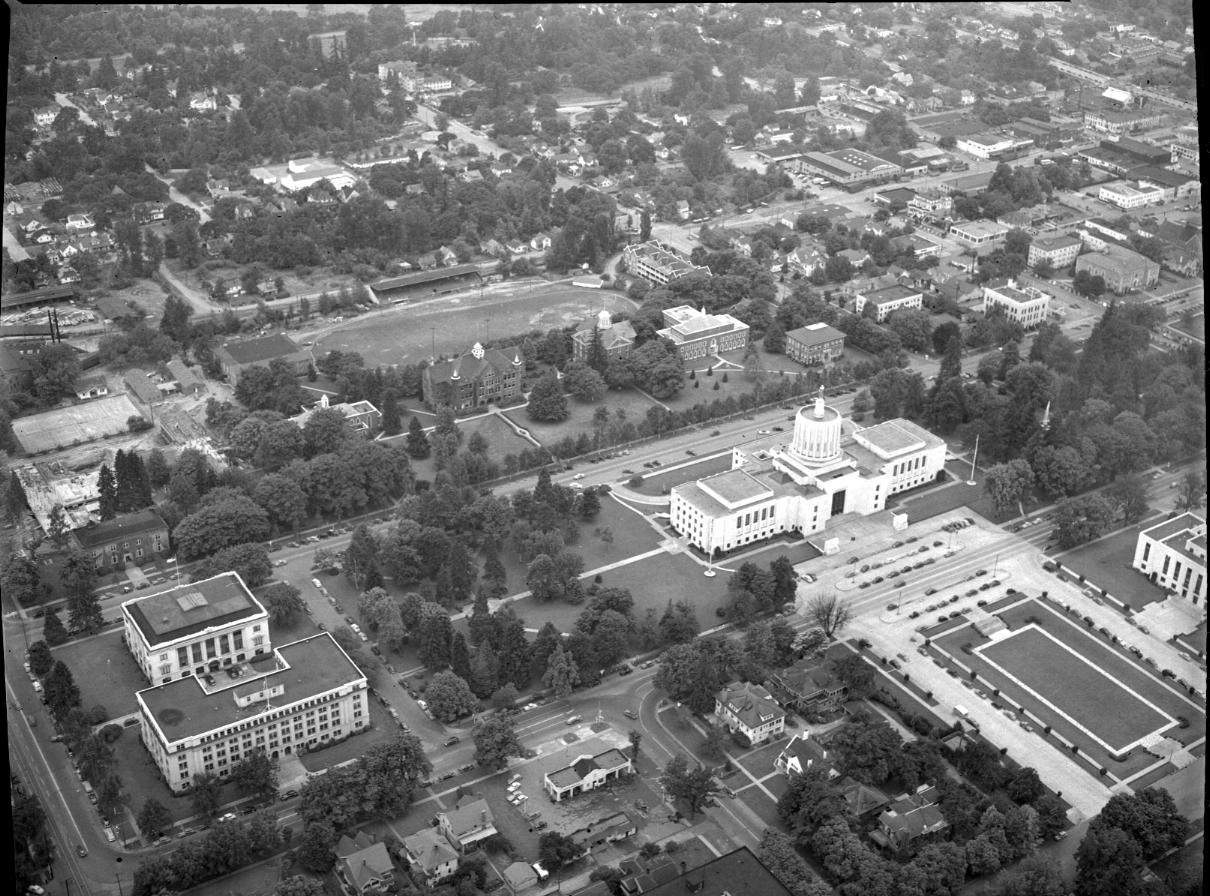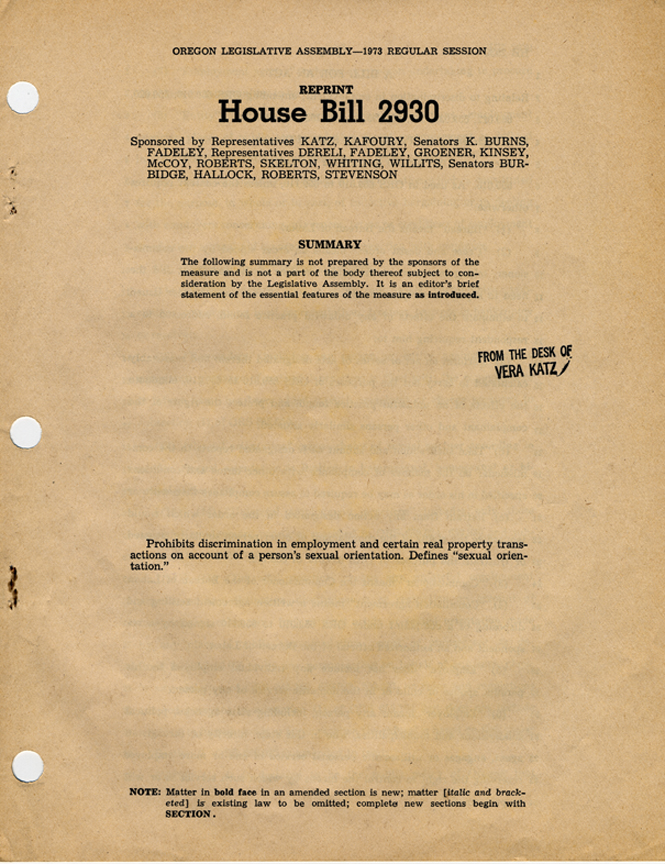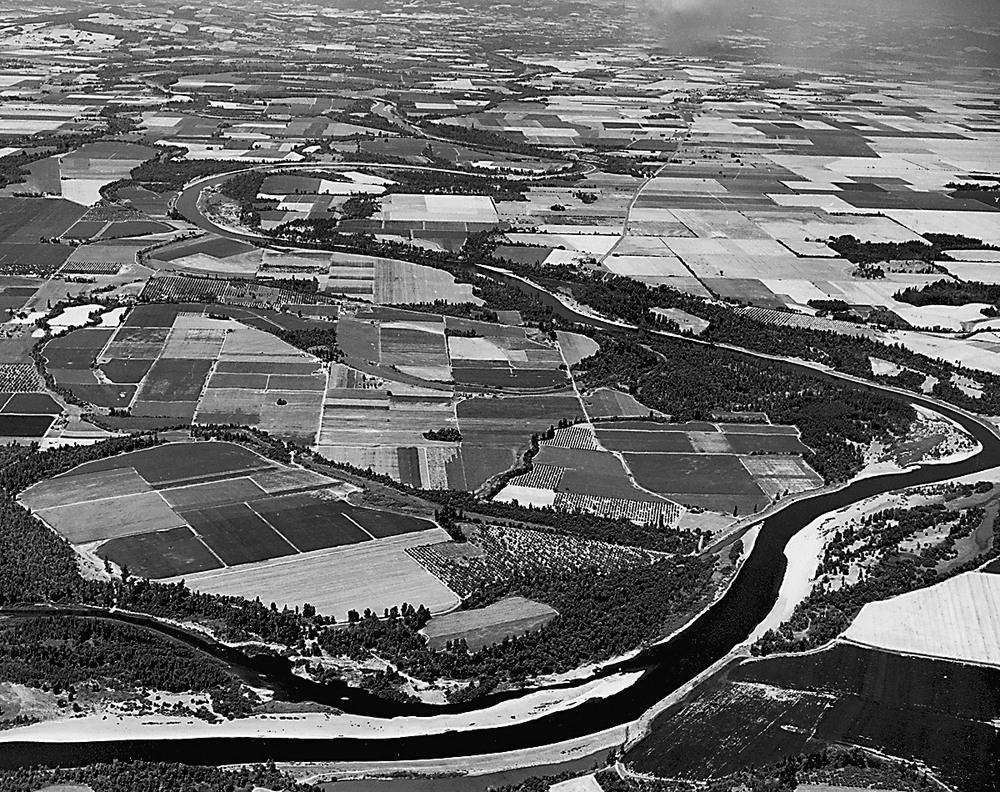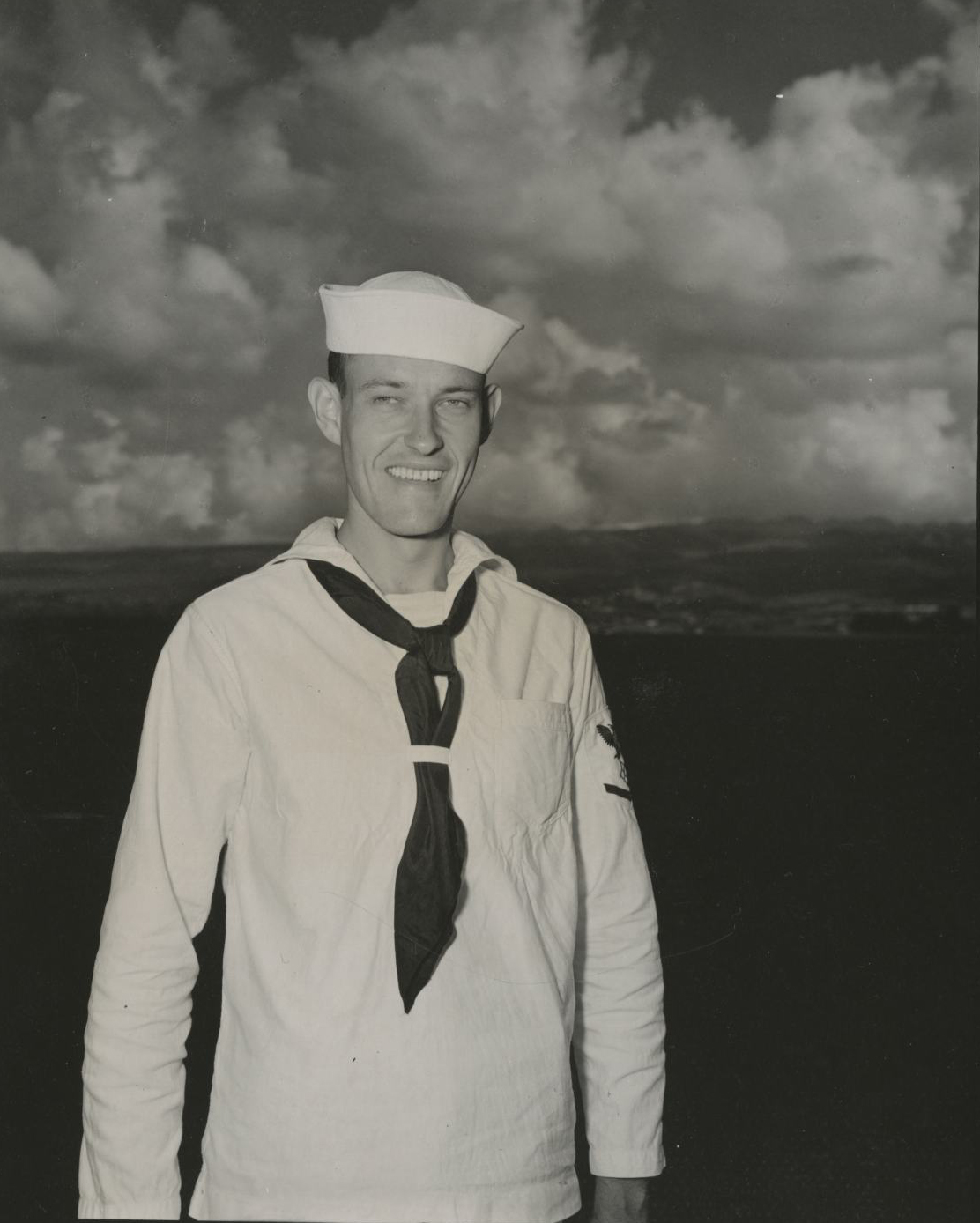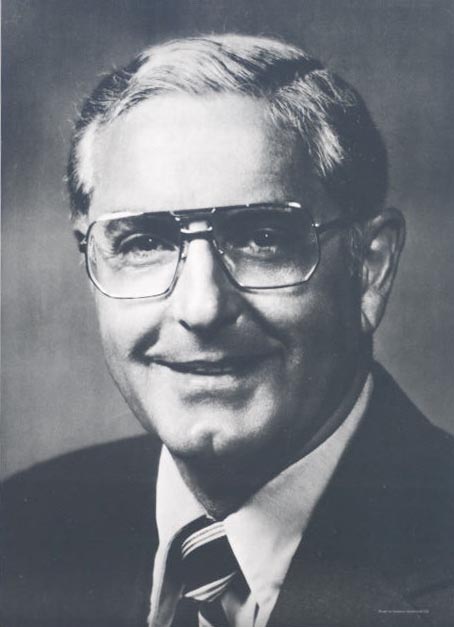Clay Myers served as Oregon Secretary of State from 1967 to 1977 and as state treasurer from 1977 to 1984. His more than seventeen years as an Oregon constitutional officer stand as a record for a member of the State Land Board, which is comprised of the governor, secretary of state, and treasurer.
Born in Portland on May 27, 1927, Henry Clay Myers Jr. spent much of his childhood near Tillamook and Sand Lake on the Oregon Coast. For nine months in 1938 and 1939, the Myers family lived in Rhodesia, where Clay’s uncle ran a gold mine. His experiences during that time helped make him an ardent supporter of racial equality and civil rights. The Myers family moved back to the Oregon Coast and then to Portland in 1942. He graduated from Benson High School, his father's alma mater, in 1944.
Myers attended the U.S. Coast Guard Academy in 1945, and at the end of World War II decided to enroll at the University of Oregon to work toward a degree in law. He received a bachelor’s degree in 1949 and attended two years of night school at Northwestern College of Law in Portland while working for a bank. He was active with the Young Republicans and articulated a liberal Republican platform; that is, he supported civil rights, labor, and the cleanup of the Willamette River. It was through that group that Myers became friends with future governor Tom McCall.
Myers began a successful career in the banking and insurance fields, living in Connecticut and remaining active in Republican politics. He and his wife Elizabeth, to whom he was introduced by a fellow Young Republican, moved back to Oregon in 1956 and had three children in the late 1950s.
When McCall was elected Oregon secretary of state in 1964, he hired Myers as assistant secretary of state. Two years later, when McCall became governor, he appointed Myers to fill out his term. As secretary of state, Myers oversaw the first mandatory statewide recount of a close election when Bob Packwood defeated Wayne Morse for the U.S. Senate in 1968.
In the 1967 urban-rural conference, “The Willamette Valley: What Is Our Future in Land Use?” in Corvallis, Myers made what he characterized as a "rip-snortin' speech" about preserving land for farms, timber, and recreation. The event helped initiate the state’s land-use legislation process, and McCall appointed Myers to chair a study of Oregon land use issues, with a report to the legislature completed in 1972. The report was crucial to the debate over Senate Bill 100 in 1973, which created the state’s current land use system. Myers’ strong support for environmental causes led to his 2000 memorialization in the Clay Myers State Natural Area, ten miles south of Tillamook.
By 1972, Tom McCall openly supported Myers as his choice to succeed him as governor. That same year, Myers staked out his position as a liberal Republican by refusing to vote for Spiro Agnew as Richard Nixon’s running mate at the Republican National Convention, a stance that demonstrated the difference between his Republicanism and the rise of a more conservative party identified with Ronald Reagan. Myers ran for governor in 1974 but was defeated in the primary by state senator Vic Atiyeh. He said that it was the “only campaign…my opponent never said a negative word about me personally.”
Myers won election as state treasurer in 1976, winning with 50.8 percent of the vote. He had a deep appreciation for the treasurer’s job from his days in private industry as well as his auditing work as secretary of state. As a member of the five-person Oregon Investment Council, he helped decide where the state retirement fund (PERS) as well as state and local tax funds were invested, and he led the effort to move those funds into new areas of investment with the highest returns, not necessarily in Oregon. He also was instrumental in selecting highly qualified investment companies to manage Oregon’s portfolio, solidifying reforms begun by treasurers Bob Straub (1965–1973) and Jim Redden (1973–1977). Myers announced his resignation from the treasurer’s office at the end of February 1984. His last day in office was the end of March, and by the next Monday he was at work in New York for the Morgan Bank, assisting states in managing their trust funds.
Myers returned to Oregon in 1988 and remained active in public life, particularly pushing for gay rights policies in government and within the Episcopal Church. By the 1990s, he was registered as an unaffiliated voter, leaving behind the Republican Party, which had become more conservative on civil rights and environmental issues since the 1980s.
Myers became a snowbird in the early 1990s, spending winters in Arizona and moving there fulltime in 1999. He died of cancer in 2004.
-
![The Oregon Supreme Court building is on the far left.]()
Capitol Mall area from the air, c.1940.
The Oregon Supreme Court building is on the far left. Courtesy Oregon State Library
-
![]()
Clay Myers, 1961.
Courtesy Oregon Hist. Society Research Lib., Wong Studios, 002685
Related Entries
-
![Gay and lesbian rights movement]()
Gay and lesbian rights movement
Before Stonewall Before New York’s Stonewall Riots in 1969, the histor…
-
Land Use Planning
In 1973, Oregon took a pioneering step in land use planning. Signed int…
-
![Robert W. Packwood (1932- )]()
Robert W. Packwood (1932- )
Robert William "Bob" Packwood, a prominent United States Senator for tw…
-
![Thomas William Lawson McCall (1913-1983)]()
Thomas William Lawson McCall (1913-1983)
Tom McCall, more than any leader of his era, shaped the identity of mod…
-
![Victor Atiyeh (1923-2014 )]()
Victor Atiyeh (1923-2014 )
Victor George Atiyeh was governor of Oregon from 1979 to 1987. The firs…
-
![Wayne Morse (1900-1974)]()
Wayne Morse (1900-1974)
Wayne Morse and the Vietnam War: the name and the conflict will be fore…
Map This on the Oregon History WayFinder
The Oregon History Wayfinder is an interactive map that identifies significant places, people, and events in Oregon history.
Further Reading
Myers, Clay, interviewed by Ellen Nesbitt. “Oral History.” Interview, recorded by Oregon Historical Society, Portland, OR. 9–10 October 1997. Transcript.
Myers, Clay, interviewed by Thomas Wright. “Oral History.” Interview, recorded by Oregon Historical Society, Portland, OR. 17 June–13 October 1994. Transcript.

